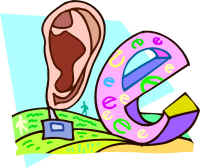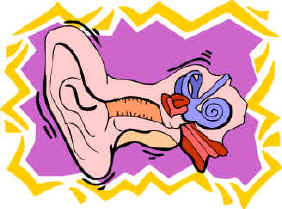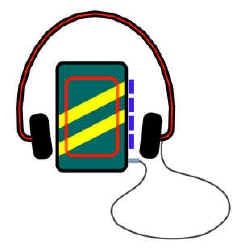

D.
Vautier
updated 12/14
The information below came off the jacket on the back of Spinorama S-8 made by Premier Albums, Inc. I believe this is a good description of what some may call psychoacoustics. The whole issue of LP "warmness" was discussed as early as 1950, long before digital technology was that good. So...
 This recording was
made on a Ampex Tape Recorder, Model 300-2, with Altec,
Telefunken, and EV667 Microphones. The Masters were cut on a Scully
Lathe with Western Electric 3A Cutters employing the 45/45 System. Heads
were driven by a modified 200 Watt Mcintosh Amplifier.
This recording was
made on a Ampex Tape Recorder, Model 300-2, with Altec,
Telefunken, and EV667 Microphones. The Masters were cut on a Scully
Lathe with Western Electric 3A Cutters employing the 45/45 System. Heads
were driven by a modified 200 Watt Mcintosh Amplifier.
Mastering was done with maximum stylus velocity consistent with minimum distortion realizing the ultimate in signal to noise ratio.
Although the total frequency range of 30 CPS to 15,000 CPS on this record is not within the range of ordinary hearing, microscopic examination will reveal the etchings of the upper dynamic frequencies. However, it is the opinion of the producers of this record that the inclusion of these inaudible frequencies does convey a certain warmth of tone that is sensed by the listener rather than actually heard. (bold face added).
Stereophonic records offer a new dimension in sound. The human ear is now employed to “mix” the music. Before with only one output this was automatically done. Now with two outputs the rhythm comes from one output and the melody comes from another. (Different arrangements of “splitting” the orchestra are used for various types of music). The ear receives the music from two sources and blends it together.
This recording may be played on any 33 1/3 RPM Stereophonic record instrument. It may also be played on any standard phonograph. However, the record may suffer a noise buildup which would be indicated when finally played on a stereophonic machine. Therefore it is recommended that this record be played only with a stereophonic needle.
The Record Industry Assn. of America has come up with an approved definition of a stereophonic record. According to the RIAA standard, “a true stereophonic disk record has two distinct orthogonal modulations derived from an original live recording in which a minimum of two separate channels were employed.”
The RIAA’s engineering committee recommended that all stereo disks which conform to the RIAA definition be so identified.
Low Frequency Limit 30 CPS
High Frequency Limit 15,000 CPS
Mastered according to RIAA standard Curves
 Psychoacustics may explain why some people like LP
records better than CDs because they are "warmer" and these
people certainly have reason to feel this way. CD refers to the usual digital
signal contained in a standard .CDA file which is the format on CDs and
carries a 44.1/16.
Psychoacustics may explain why some people like LP
records better than CDs because they are "warmer" and these
people certainly have reason to feel this way. CD refers to the usual digital
signal contained in a standard .CDA file which is the format on CDs and
carries a 44.1/16.
Records played on good equipment can do better. The 41,400/16 is a common sample rate (the slices taken per second) and the 16 refers to bit depth, that is the way the bit sample can be "colored". LP analog music needs none of this but can generate a perfect audio wave often better than 20 to 20,000 CPS again depending on equipment. Analog is pure sound and is not bounded by sample rates and bit depths.
There is a distinct difference
between the analog waveform eventually generated from a digital mp3 and a pure audio signal coming from a vinyl
grove especially when the former has been mashed and compressed into a
little jar which often contains nothing above or below normal
hearing. So to most casual listeners whatever music a good 320 bit
rate mp3 throws out on good equipment sounds just fine and does not seem
to differ from analog LP. But it certainly does matter to purist
audiophiles who have good ears and believe in psychoacoustics. I
for one
perceive a difference although I simply have to live with the fact that mp3 is the
common media and records are not. So I can't go around with a record
player around my neck.
it certainly does matter to purist
audiophiles who have good ears and believe in psychoacoustics. I
for one
perceive a difference although I simply have to live with the fact that mp3 is the
common media and records are not. So I can't go around with a record
player around my neck.